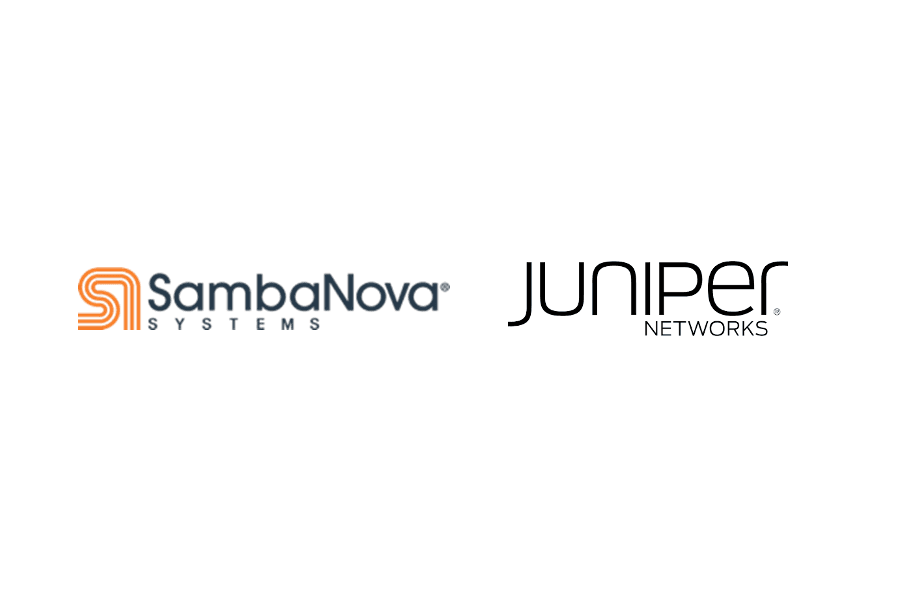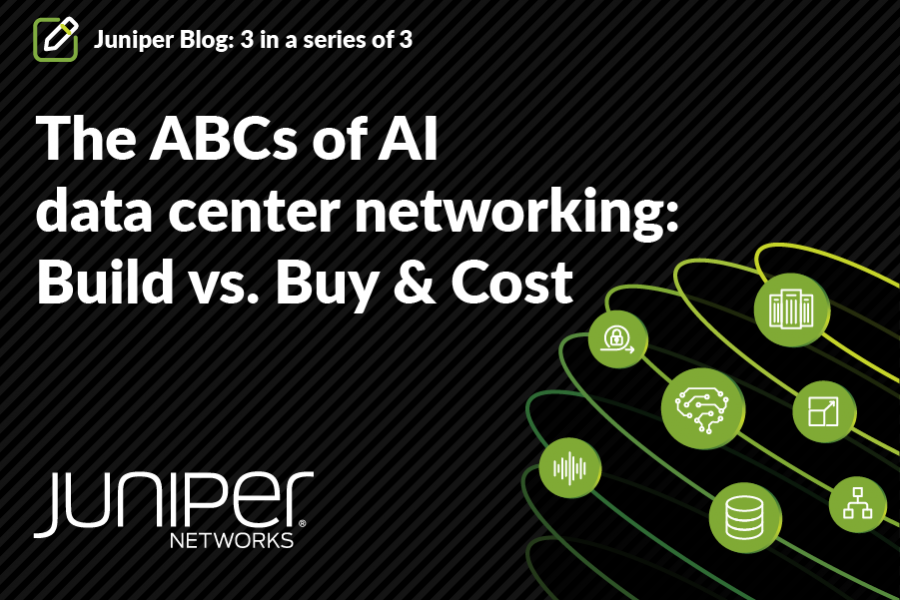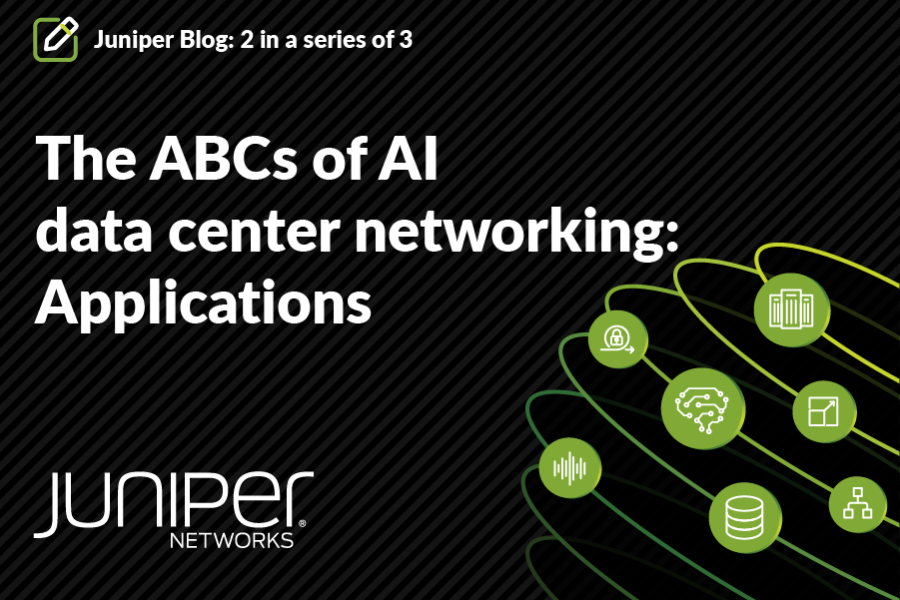Data centers everywhere are under unprecedented stress—more traffic, new demands for digital transformation, and now AI applications coming online requiring innovative, exacting DC designs. Networks need to be more agile and more flexible than ever before. Intent-based networking (IBN) helps data center operators scale their networks by automating many day-to-day tasks and providing visibility into applications and network infrastructure.
IBN starts with the intent (What do you mean for your network to do? What business outcome are you seeking?) and then:
- Translates the intent into actionable abstractions
- Executes the abstractions as vendor-specific, device-specific configurations
- Validates the outcomes
- Monitors the network to make sure it’s satisfying your intent
- Prevents “intent drift” by adjusting parameters as needed to ensure compliance throughout the entire network lifecycle
More and more, AI tools also complement and inform IBN. AI can parse telemetry or other data to provide recommendations and push changes that better help your network fulfill your stated intent. And the possibilities for AI-based analytics are only beginning to be explored.
In my eBook, “Intent-Based Networking for Dummies,” I give you a deep dive into the theory and practice of IBN. This blog is meant as a companion piece to the eBook. Think of it as a five-item checklist to help you pin down the right IBN solution for your organization.
1. Understand what IBN really is
This seems obvious, right? It’s not as straightforward as you might think.
IBN is a major industry trend and its benefits are well understood, but some IBN solutions are IBN in name only. Many providers offer only part of the functionality of a full-fledged IBN solution.
Some conflate IBN with automation. Automation promises to reduce OpEx by cutting operational tasks from days or weeks to minutes, but not all automation approaches can deliver this. IBN can. By definition, IBN works by translating intent into validated, vendor-specific configurations, which leads to reliable, predictable results. Automation with an intent-based approach offers many other benefits, too.
Intent-based analytics (IBA) ensures that your network is marching in lockstep with your intent throughout the service lifecycle, and flow analysis gives you deep, essential insights into the application flows across your network fabric. If an IBN solution doesn’t include analytics and deep visibility into network performance with continuous validation, it’s not really IBN.
2. Don’t start with hardware
Often, teams select a hardware vendor and then engineer their network to fit the constraints of the product. This is a bottom-up approach. Why compromise? Forward-thinking network architects start with intent. You identify the outcomes you want, you design the services that will create those outcomes, and you design your network to support those services. Once your intent is clearly defined, then you can shop around for vendors that will help you meet your goals. This top-down approach ensures that your business and technical requirements drive your network design, rather than trying to shoe-horn your requirements into specific device capabilities.
True IBN starts where you start—with business intent. You can translate your intent into an IBN solution’s reference designs with vendor-independent network and service abstractions and only then choose the physical hardware to accomplish what you need. A proper IBN system gives you a list of devices across multiple vendors that are capable of turning your developed abstraction into a tangible infrastructure.
When you scale your network or deploy new services, IBN will help you find the best vendor and hardware to support your intent. Even if you plan to build a single-vendor network, IBN can help you choose the correct hardware from that vendor.
3. Don’t DIY
DevOps helps network operators clear roadblocks and efficiently roll out new applications and services. It has also pushed skillsets such as automation tools and programming into the network operations space. Being good with a CLI isn’t enough—operators need some programming chops, too.
But there’s also the risk of relying too heavily on operations tools built entirely in-house. These tools may be custom-built for the specifics of your network, but what happens when the network changes? When a vendor changes its capabilities? Or when your network automation expert leaves? Are you sure your in-house tools are fully maintainable and follow industry best practices?
Many operators go down the DIY path to save the CapEx outlay for a commercial automation solution, without anticipating the much higher OpEx outlay required to develop and maintain an in-house solution.
This is why, in many cases, a DIY approach isn’t the most cost-effective option. Building and maintaining a DIY solution requires time, teams, and talent that might be better used on other projects. According to research from Analysys Mason, the most common challenge for enterprises automating their data center networks in-house was a lack of resources for managing the software lifecycle. In hindsight, 66% of DIY automators polled wished they had gone with a third-party solution.
4. Look for big data you can actually use
Sifting through huge volumes of data to find the information you need takes time, whether you’re querying your network during steady state, setting thresholds to alert you when state is drifting from what you expect, or trying to get to the root of a problem.
“Big data” telemetry without actionable insights is more con than pro—teams end up spending resources and time to find the data they need. IBN can help reduce your data analysis effort from hours, days, or weeks to minutes, drastically reducing MTTR and freeing up key resources for more important work (not to mention improving accuracy and consistency).
AIOps tools can complement IBN with advanced predictive analytics, real-time monitoring, and adaptive decision-making capabilities. Working together, IBN and AI can anticipate network needs, proactively optimize configurations, and adapt to changing network conditions.
When looking into a provider’s IBN solution, consider how it surfaces actionable data and integrates with AI tools.
5. Keep your eye on the horizon
Our industry has a bad habit of wasting talented strategic minds on day-to-day tactical operations (also known as firefighting), rather than giving them what they need to turn their expertise to fixing systemic issues and long-term planning. Too often, operators get bogged down in data searches, discrete element management, and change management, instead of getting the opportunity to step back and look at the big picture.
IBN gives them that opportunity. It provides insights into network services from Day 0 through Day 2 so teams can think about the network as a complete service rather than a collection of nodes and links.
For a deeper dive into the theory and application of intent-based analytics, check out Jeff Doyle’s eBook, Intent-Based Networking for Dummies.


